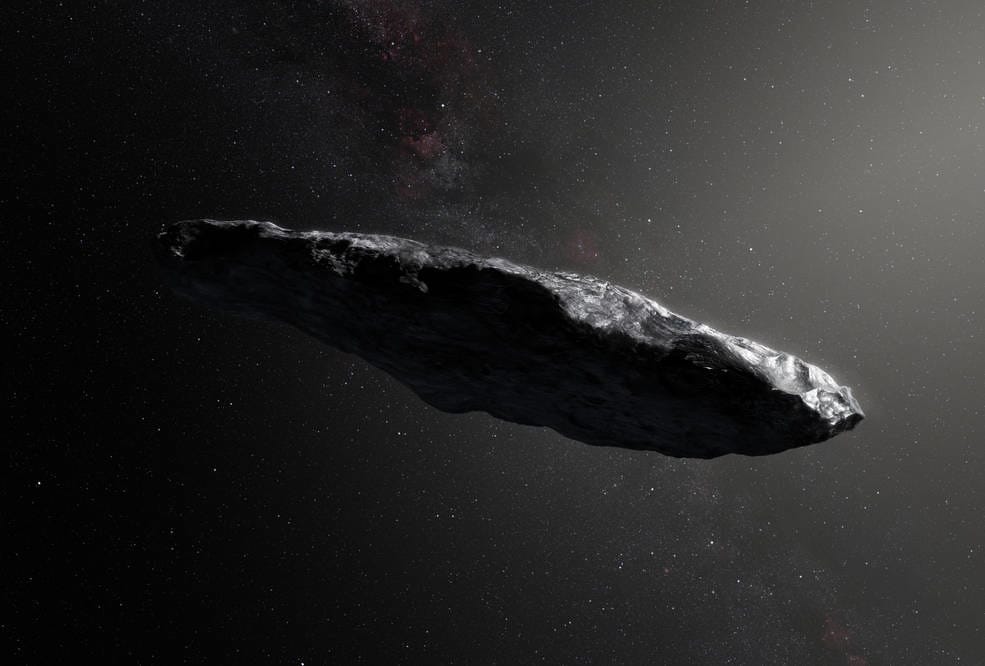Another Mysterious Visitor: New Interstellar Object Detected Crossing Our Solar System
A second confirmed interstellar visitor has been spotted racing through our cosmic neighborhood, offering astronomers another precious opportunity to study matter from beyond our solar system.
Astronomers have confirmed the detection of a new interstellar object traversing our solar system, marking only the second time in recorded history that such a visitor from deep space has been definitively identified. The object, initially catalogued as C/2019 Q4 and later designated 2I/Borisov, represents a groundbreaking opportunity for scientists to study pristine material from another star system.
A Rare Cosmic Encounter
The discovery follows the historic detection of 'Oumuamua in 2017, the first confirmed interstellar visitor. While 'Oumuamua's fleeting passage left scientists with more questions than answers, this new object offers unprecedented advantages for extended observation and analysis.
Unlike its predecessor, 2I/Borisov was detected much earlier in its solar system journey, providing astronomers with months rather than weeks to conduct detailed studies. The object was first spotted by amateur astronomer Gennady Borisov at the Crimean Astrophysical Observatory in August 2019, using a 0.65-meter telescope he built himself.
Distinctive Characteristics
Initial observations reveal fascinating details about this interstellar wanderer. The object exhibits a highly eccentric orbit with an eccentricity of approximately 3.35, far exceeding the values typical of solar system objects. This extreme orbital path, combined with its incoming velocity of about 32 kilometers per second, provides conclusive evidence of its extrasolar origin.
Composition and Appearance
Spectroscopic analysis indicates that 2I/Borisov is likely a comet, displaying the characteristic coma and tail as it approaches the Sun. The object's composition appears remarkably similar to comets native to our solar system, suggesting that the fundamental building blocks of planetary systems may be more universal than previously thought.
Measurements indicate the nucleus is approximately 1-2 kilometers in diameter, making it significantly smaller than many periodic comets but large enough for detailed study. The comet's dust production rate and gas emission patterns closely match those of solar system comets at similar distances from the Sun.
Scientific Significance
The arrival of 2I/Borisov represents an extraordinary scientific opportunity. For the first time, researchers can study relatively unaltered material from another star system without the need for expensive interstellar missions.
Research Opportunities
Multiple space agencies and research institutions have coordinated observation campaigns using ground-based telescopes and space observatories. The Hubble Space Telescope has captured detailed images showing the object's coma structure, while spectroscopic studies have revealed insights into its chemical composition.
These observations are providing crucial data about:
- The formation conditions in other stellar systems
- The universality of comet composition across different star-forming regions
- The potential for organic compounds in interstellar space
- The dynamics of objects ejected from their parent systems
Implications for Planetary Science
The study of interstellar visitors like 2I/Borisov offers unique insights into planetary system formation and evolution. By analyzing the chemical signatures and physical properties of these objects, scientists can better understand the processes that shaped our own solar system billions of years ago.
The similarity between 2I/Borisov and native solar system comets suggests that the fundamental processes of planet formation may be remarkably consistent across different stellar environments. This finding has profound implications for our understanding of planetary system architecture and the potential prevalence of Earth-like worlds.
Looking Forward
As 2I/Borisov continues its journey through our solar system, astronomers are maximizing every observation opportunity. The object will make its closest approach to the Sun in December 2019, providing optimal conditions for detailed study before it begins its journey back to interstellar space.
The success in detecting and studying this second interstellar visitor demonstrates significant improvements in our observational capabilities. Advanced sky surveys and improved detection algorithms suggest that such discoveries may become more common in the coming years, potentially revolutionizing our understanding of the galaxy's structure and composition.
Conclusion
The detection of 2I/Borisov marks a pivotal moment in astronomy, offering an unprecedented window into the nature of objects from beyond our solar system. As we continue to study this remarkable visitor, we gain valuable insights into the fundamental processes that govern planetary system formation throughout the galaxy. With improved detection capabilities and international cooperation, the era of interstellar astronomy has truly begun, promising exciting discoveries that will reshape our understanding of our cosmic neighborhood.
